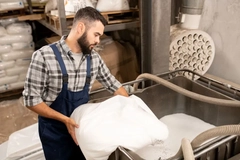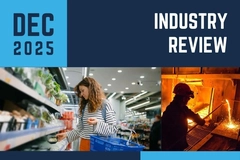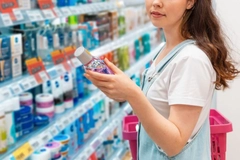Netherlands considers repeal of single-use plastic surcharge as organizations question effectiveness

A majority in the Dutch lower house of parliament, a key legislative body in the Netherlands, is planning to remove the upcoming €0.25 (US$0.26) surcharge on disposable plastic packaging, stating that it is “unfair” for consumers to pay for single-use plastic packaging.
The Netherlands introduced the single-use plastic levy in 2023. The regulation outlines the rules and charges for businesses and consumers using single-use plastic packaging such as coffee cups and French fry containers.
Packaging Insights speaks to Dirk Groot, founder of Zwerfinator (Wanderer), a foundation that campaigns to eliminate single-use plastic in a “fight against litter and plastic soup that goes much further than just picking up litter.”
Groot says: “There are political parties that never liked the surcharge at all, and there are parties that think people with little money are victims’ because they have to pay more for the same products. And then some parties understand that the plastic surcharge doesn’t change the behavior of consumers.”
Changing regulation
In December 2024, the surcharge was changed so that entrepreneurs do not choose the amount themselves but charge a flat rate of €0.25 per item. Despite a report from the Dutch Ministry of Infrastructure and Water Management stating that the surcharge was successful, some businesses noticed a practical application bottleneck.
The regulation change was led by the State Secretary for Public Transport and the Environment, The Party for Freedom’s Chris Jansen. The surcharge amendment was set to take effect on January 1, 2026.
Groot suggests that surcharges on single-use plastic do not make much difference in reducing plastic waste overall.In response to the regulatory changes, People’s Party for Freedom and Democracy MP Martin Buijsse posted on X in late 2024, that “Charging €0.25 extra for a bowl of fries is what the VVD concerns as nonsense. It yields nothing and is at the expense of the hardworking Dutchman’s wallet. We won’t do this.”
Reducing single-use plastic
Groot suggests that surcharges on single-use plastic do not make much difference in reducing plastic waste overall, indicating that the reasoning to implement a surcharge — to encourage consumers to bring reusables to establishments — was not an effective tactic to create change.
He explains: “Companies charge the surcharge and can keep the money. It is not a tax. So if they don’t change their packaging, they earn extra money. There might be more reason to change if it was a tax.”
“The surcharge is not like deposit money that gives people a reason to bring the packaging back or even pick it up from the streets if someone else threw it away.”
Across most supermarket chains, the Netherlands offers a DRS on plastic bottles and cans, usually ranging between €0.15–€0.25 (US$0.16–$0.26). Consumers can return their empties to a reverse vending machine at stores and collection points.
DRS
Dutch recycling foundation Afvalfonds Verpakkingen announced plans to install an additional 5,400 plastic bottle collection points throughout the Netherlands for its DRS after conceding that the government’s mandatory 90% collection rate will not be met until 2026.
Groot points out that the success of plastic waste management systems hinges on plastic alternatives in the market.
“Better measures for plastic waste management are a ban on plastic packaging (like the EU did for straws, forks, and spoons) if there are already alternatives without plastic in the market.”
“There are a lot of these already on the streets that we presented to the lower house of parliament in a report. We are now invited by the Secretary of State to come and discuss our findings,” he adds.
“However, if plastic-free alternatives do not yet exist, for example cups, a DRS is much more effective.”










